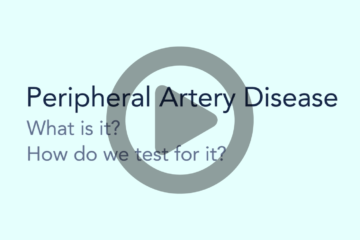Understanding the Link Between COPD and Peripheral Artery Disease: Key Findings and Health Strategies
Chronic obstructive pulmonary disease (COPD) is a common respiratory condition that affects millions of people worldwide. A recent study titled “COPD is associated with an increased risk of peripheral artery disease and mortality” has shed light on the significant health risks faced by individuals with COPD, particularly the increased risk of developing peripheral artery disease (PAD) and higher mortality rates.

Key Findings
The study found that individuals with COPD have nearly double the risk of developing PAD compared to those without COPD. PAD is a condition where the arteries that supply blood to the limbs become narrowed or blocked, leading to reduced blood flow and potential complications such as pain, ulcers, and even limb loss. Moreover, the research highlighted that people suffering from both COPD and PAD have substantially higher mortality rates.
Research Methodology
The researchers conducted a comprehensive analysis using data from multiple cohorts, examining the health records of individuals with COPD and comparing them to those without the condition. They assessed the prevalence of PAD and mortality rates, adjusting for various factors such as age, gender, smoking status, and other comorbidities. This robust methodology ensured that the findings were reliable and provided a clear picture of the risks associated with COPD.
Mortality Rates:
- Without COPD or PAD: 10.0 per 100,000 person-years
- With COPD only: 18.4 per 100,000 person-years
- With PAD only: 16.1 per 100,000 person-years
- With both COPD and PAD: 30.1 per 100,000 person-years
Importance of Early Identification and Treatment
Early detection and treatment of both COPD and PAD are crucial for improving health outcomes. Here are some practical strategies to consider:
- Regular Health Screenings: Individuals with COPD should undergo regular screenings for PAD. Early identification can help manage the condition before it leads to severe complications.
- Lifestyle Changes: Quitting smoking, maintaining a healthy diet, and engaging in regular physical activity can significantly reduce the risk of both COPD and PAD.
- Medication and Therapies: Proper management of COPD with medications and pulmonary rehabilitation can improve lung function and overall health. Similarly, medications to improve blood flow and manage PAD symptoms are essential.
- Monitoring and Follow-Up: Continuous monitoring of symptoms and regular follow-up appointments with healthcare providers can help manage both conditions effectively.
Conclusion
The findings of this study underscore the importance of addressing chronic conditions like COPD and PAD through early detection and proactive treatment. By adopting healthy lifestyle changes and staying vigilant about regular health screenings, individuals can significantly improve their quality of life and reduce the risk of severe complications.
Understanding the link between COPD and PAD is a vital step towards better health outcomes. If you or someone you know is affected by COPD, consider discussing these strategies with a healthcare provider to ensure comprehensive care and management.
Feel free to share your thoughts or ask any questions about this topic!
References
[1] COPD is associated with an increased risk of peripheral artery disease …
[2] A Prognostic Risk Index for Long-term Mortality in Patients With …


